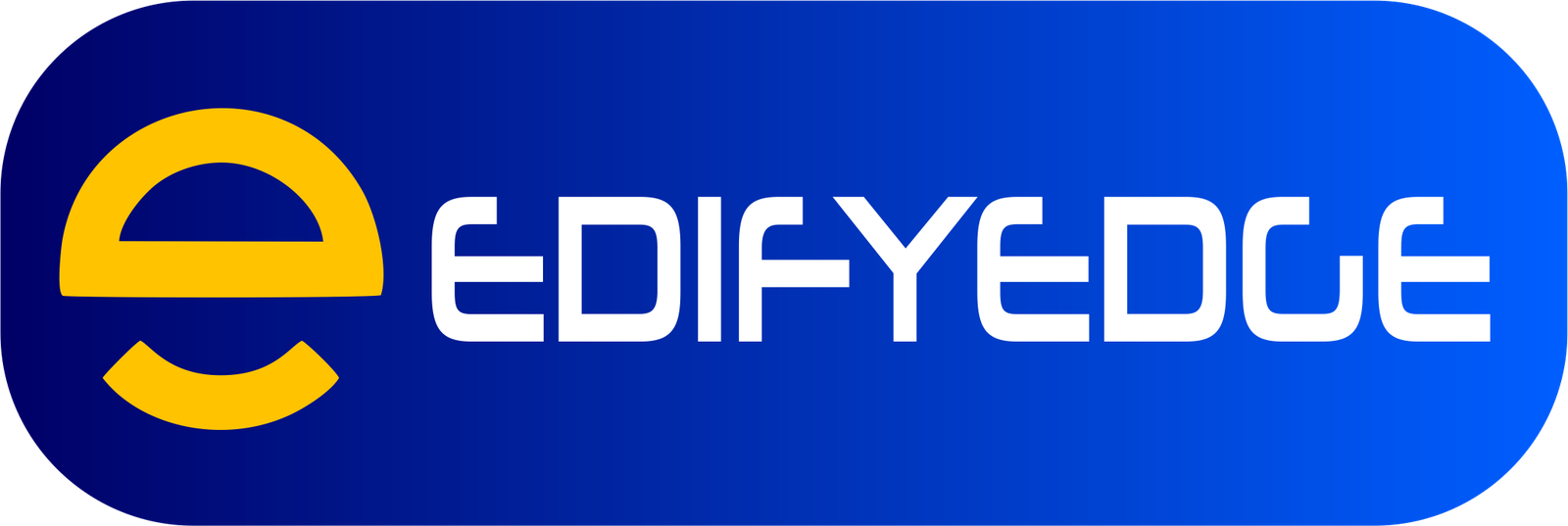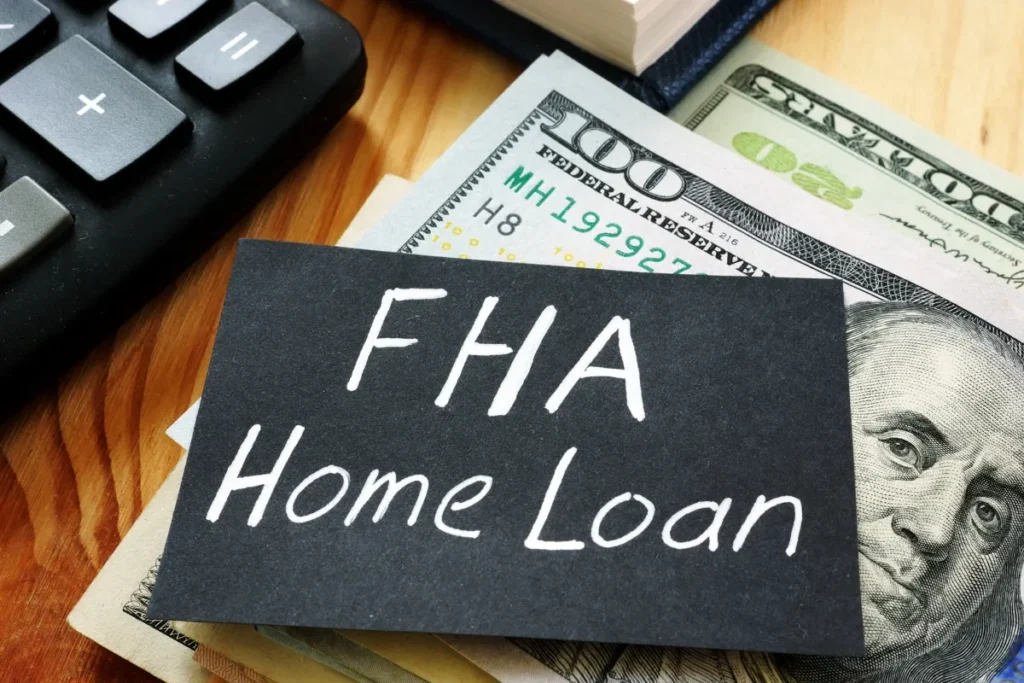What is an FHA Loan?
An FHA loan is a mortgage insured by the Federal Housing Administration, a government agency within the U.S. Department of Housing and Urban Development (HUD). FHA loans are designed to make homeownership more accessible to a wider range of borrowers, particularly those with lower incomes or credit scores that may not meet the stricter requirements of conventional mortgages.
The FHA loan program was established in 1934 as part of the National Housing Act, with the primary goal of boosting homeownership and revitalizing the housing market in the aftermath of the Great Depression. By providing mortgage insurance, the FHA reduces the risk for lenders, allowing them to offer loans with lower down payment requirements and more flexible credit criteria.
One of the key advantages of an FHA loan is the low down payment requirement. Borrowers can put down as little as 3.5% of the purchase price, making it easier for first-time homebuyers or those with limited savings to enter the housing market. Additionally, FHA loans have more lenient credit score requirements compared to conventional loans, typically accepting scores as low as 580 for the minimum 3.5% down payment, and even lower scores with a larger down payment.
Another benefit of FHA loans is that they allow for higher debt-to-income ratios, meaning borrowers can carry more debt relative to their income and still qualify for a loan. This can be particularly helpful for borrowers with student loans or other significant debt obligations.
FHA Credit Score Requirements
The Federal Housing Administration (FHA) has specific credit score requirements for borrowers seeking an FHA loan.
FHA Loan Limits
FHA loan limits refer to the maximum mortgage amount that the Federal Housing Administration (FHA) will insure for a home loan. These limits vary based on several factors, including the property’s location and the type of housing unit.
One of the primary factors that determine FHA loan limits is the county or metropolitan area where the property is located. The FHA assigns different loan limits to different geographic areas based on the local housing costs and median home prices. Areas with higher housing costs generally have higher FHA loan limits, while areas with lower housing costs have lower limits.
The FHA loan limits
The FHA loan limits are divided into two main categories: low-cost areas and high-cost areas. Low-cost areas are typically counties or metropolitan areas where housing costs are below the national average, while high-cost areas are those where housing costs are above the national average.
In addition to the geographic location, the FHA loan limits also vary based on the type of housing unit. There are different limits for single-family homes, duplexes, triplexes, and four-plexes. Generally, the limits are higher for multi-unit properties compared to single-family homes.
To give you an idea of the current FHA loan limits, as of 2023, the “floor” or the minimum loan limit for low-cost areas is $472,030 for a single-family home. In high-cost areas, the “ceiling” or the maximum loan limit is $1,089,300 for a single-family home. These limits can change annually based on fluctuations in housing costs and the FHFA’s conforming loan limits.
Eligible Property Types and Requirements
An FHA loan can be used to purchase various types of properties, including single-family homes, townhouses, condominiums, and multi-unit properties up to four units. However, the property must meet specific minimum standards set by the U.S. Department of Housing and Urban Development (HUD) to qualify for an FHA loan.
Minimum Property Standards
FHA has established minimum property standards to ensure that the home is safe, secure, and structurally sound. These standards cover various aspects of the property, including:
- Roof: The roof must be in good condition and have a remaining life expectancy of at least two years.
- Foundation: The foundation must be free from cracks, settlement, and other defects that could compromise the structural integrity of the home.
- Heating and Cooling Systems: The heating and cooling systems must be in working order and capable of maintaining a comfortable temperature throughout the home.
- Electrical and Plumbing Systems: The electrical and plumbing systems must be in good condition and meet local building codes.
- Water Supply: The property must have a continuous supply of safe and potable water.
- Sanitary Facilities: The home must have functional and properly installed sanitary facilities, including a kitchen sink, bathroom sink, toilet, and bathtub or shower.
Appraisal Requirements
An FHA appraisal is required to determine the property’s market value and ensure that it meets the minimum property standards. The appraisal is conducted by an FHA-approved appraiser, who will inspect the property and provide a detailed report on its condition, any necessary repairs, and the estimated market value.
Lead-Based Paint Rules
If the property was built before 1978, the lender must ensure compliance with HUD’s lead-based paint rules. These rules require the disclosure of any known lead-based paint hazards and the provision of educational materials to the borrower. Additionally, a lead-based paint inspection or risk assessment may be required, depending on the age of the property and the presence of children.
Upfront and Annual Mortgage Insurance Premiums
Upfront Mortgage Insurance Premium
The upfront mortgage insurance premium for an FHA loan is a one-time payment made at closing. This premium is typically financed into the loan amount, so you don’t need to pay it out of pocket. The upfront premium rate is currently set at 1.75% of the base loan amount.
Annual Mortgage Insurance Premium
In addition to the upfront premium, FHA borrowers must pay an annual mortgage insurance premium. This premium is calculated based on the loan amount, loan term, and loan-to-value (LTV) ratio. The annual premium is divided into 12 monthly installments and added to your mortgage payment.
For most FHA loans, the annual mortgage insurance premium ranges from 0.45% to 1.05% of the base loan amount. The exact rate depends on your down payment amount and loan term.
Factors Affecting Mortgage Insurance Premiums
Several factors can influence the mortgage insurance premiums you’ll pay on an FHA loan:
Loan-to-Value Ratio (LTV): The higher your LTV ratio (lower down payment), the higher your annual mortgage insurance premium will be.
Loan Term: Loans with longer terms (e.g., 30 years) typically have higher annual premiums compared to shorter-term loans (e.g., 15 years).
Credit Score: While not a direct factor, your credit score can impact your ability to qualify for the lowest mortgage insurance rates.
Removing Mortgage Insurance Premiums
Unlike conventional loans, FHA mortgage insurance premiums cannot be canceled once your loan reaches a certain equity level. However, there are two ways to potentially remove FHA mortgage insurance:
-
Refinancing: Once you’ve built up enough equity (typically 20%), you can refinance your FHA loan into a conventional loan without mortgage insurance.
-
Loan Payoff: You can eliminate mortgage insurance by paying off your FHA loan in full.
It’s important to note that FHA mortgage insurance premiums are required for the life of the loan unless you refinance or pay off the loan entirely.
FHA Streamline Refinance Overview
The FHA Streamline Refinance is a mortgage refinance program offered by the Federal Housing Administration (FHA) that allows existing FHA homeowners to refinance their mortgage with minimal documentation and underwriting requirements. This program is designed to help homeowners take advantage of lower interest rates and potentially reduce their monthly mortgage payments.
The FHA Streamline Refinance is a simplified refinancing process that does not require a home appraisal, credit score verification, or income documentation in most cases. This streamlined approach makes the process faster and more cost-effective for eligible borrowers.
To qualify for the FHA Streamline Refinance, borrowers must meet certain eligibility requirements set by the FHA.
The FHA Streamline Refinance process typically involves fewer steps and less documentation compared to a traditional refinance. Borrowers will need to submit basic information, such as their current mortgage statement and proof of homeowner’s insurance. The lender will then verify the eligibility requirements and process the refinance application.
Overall, the FHA Streamline Refinance is a valuable option for existing FHA homeowners looking to take advantage of lower interest rates, reduce their monthly payments, or switch to a more stable mortgage product. Its streamlined nature makes it an attractive choice for those seeking a simplified refinancing process.
FHA Energy Efficient Mortgage
The FHA Energy Efficient Mortgage (EEM) is a type of financing that allows homebuyers to purchase or refinance a home and include the cost of energy-efficient improvements in the mortgage. This program aims to promote energy conservation and reduce utility costs for homeowners.
Eligibility for an FHA Energy Efficient Mortgage
To qualify for an FHA Energy Efficient Mortgage, borrowers must meet the following eligibility requirements:
- The property must be an existing or new construction home that meets FHA’s minimum property standards.
- The energy-efficient improvements must be cost-effective, meaning that the total cost of the improvements should not exceed the total projected savings from reduced utility costs over the useful life of the improvements.
- The borrower must have a credit score and debt-to-income ratio that meets FHA’s guidelines for loan approval.
Benefits of an FHA Energy Efficient Mortgage
The FHA Energy Efficient Mortgage offers several benefits to homebuyers and homeowners, including:
- Lower utility costs: Energy-efficient upgrades can significantly reduce monthly utility bills, saving homeowners money in the long run.
- Increased property value: Energy-efficient homes are often more valuable than their less efficient counterparts, potentially increasing the resale value of the property.
- Improved comfort and quality of life: Energy-efficient homes are typically more comfortable, with better insulation, temperature control, and air quality.
- Environmental benefits: By reducing energy consumption, homeowners can contribute to environmental conservation efforts and reduce their carbon footprint.
How to Qualify for an FHA Energy Efficient Mortgage
To qualify for an FHA Energy Efficient Mortgage, borrowers must follow these steps:
- Find an FHA-approved lender that offers the EEM program.
- Obtain a Home Energy Rating System (HERS) report or a similar energy assessment from a qualified energy consultant or rater. This report will identify the recommended energy-efficient improvements and estimate the potential cost savings.
- Provide the energy assessment report to the lender, who will determine the maximum mortgage amount based on the cost of the improvements and the projected energy savings.
- Complete the standard FHA loan application process, including providing documentation of income, employment, credit history, and other required information.
Here is a draft for the section on the FHA 203(k) Rehabilitation Mortgage Loan:
The FHA 203(k) Rehabilitation Mortgage Loan
Purpose: The 203(k) loan serves two main purposes – helping buyers purchase homes that need significant repairs or upgrades, and allowing current homeowners to renovate or modernize their existing properties. Rather than taking out multiple loans, the 203(k) combines the mortgage and renovation funds into one loan product.
Eligible Repairs/Improvements: The 203(k) loan covers a wide variety of renovation projects, both structural and non-structural. Eligible repairs and improvements include room additions, kitchen and bathroom remodels, accessibility improvements, plumbing and electrical work, HVAC replacement, roof repair/replacement, flooring installation, window and door replacements, and more. Essentially any project that improves the functionality, safety, or habitability of the home can potentially be covered.
Eligibility Requirements: To qualify for a 203(k) loan, borrowers must meet standard FHA credit, income, and down payment criteria. The property must also meet certain eligibility rules – it must be at least a year old, and total renovation costs must fall within FHA mortgage limits based on the projected after-renovation value.
Process Overview: The 203(k) loan process involves several additional steps beyond a typical mortgage. After finding an FHA-approved lender, the borrower must have renovation plans and cost estimates approved. An FHA consultant will conduct inspections during the renovation phase to ensure work is completed properly. All contractors must be approved as well. Once renovations are complete, there is a final inspection before loan funds are fully released.
Getting Pre-Approved for an FHA Loan
Getting pre-approved for an FHA loan is an important first step in the home buying process. Pre-approval helps you understand how much you can borrow and shows sellers that you’re a serious buyer. Here are the key steps to get pre-approved:
Steps to Get Pre-Approved
-
Gather Required Documentation: You’ll need to provide your lender with various documents, including:
- W-2 forms from the past two years
- Recent pay stubs and proof of employment
- Federal tax returns from the past two years
- Bank statements and proof of assets
- Credit report and credit scores
-
Complete a Mortgage Application: Your lender will have you fill out a detailed mortgage application, which covers your income, employment history, assets, debts, and the type of property you’re looking to purchase.
-
Provide an Estimated Purchase Price: Although you don’t need a specific property in mind, you’ll need to provide an estimated purchase price to help the lender calculate your loan amount and eligibility.
-
Allow the Lender to Pull Your Credit: The lender will need to pull your credit report and credit scores to assess your creditworthiness and determine the interest rate you’ll qualify for.
-
Await Underwriting Approval: Once you’ve submitted all the required documentation, the lender’s underwriting team will review your application and supporting documents to determine if you meet the FHA’s eligibility requirements.
Importance of Pre-Approval
Getting pre-approved is crucial for several reasons:
- Shows You’re a Serious Buyer: Pre-approval demonstrates to sellers that you’ve been vetted by a lender and have the financial means to purchase their property.
- Gives You an Accurate Budget: Pre-approval provides you with a clear understanding of how much you can borrow, allowing you to focus your home search on properties within your budget.
- Speeds Up the Purchase Process: With pre-approval in hand, you’ll be able to move quickly when you find the right property, as the lender has already verified your eligibility and documentation.
By taking the time to get pre-approved, you’ll increase your chances of having your offer accepted and streamline the overall home buying process.
How to Find FHA-Approved Lenders and Compare Rates
Finding an FHA-approved lender is crucial when seeking an FHA loan. Here are some tips to help you locate reputable lenders and compare their offerings:
Utilize Online Lender Searches
The U.S. Department of Housing and Urban Development (HUD) provides an online tool that allows you to search for FHA-approved lenders in your area. This tool can help you find lenders that offer FHA loans and meet the necessary qualifications.
Check with Local Banks and Credit Unions
Many local banks and credit unions offer FHA loans. Reach out to institutions in your area and inquire about their FHA loan programs. Local lenders may have a better understanding of the housing market in your region and can provide personalized guidance.
Ask for Referrals
Reach out to friends, family members, or real estate professionals who have recently obtained an FHA loan. They may be able to recommend lenders they had a positive experience with, making your search more efficient.
Questions to Ask Potential Lenders
When evaluating FHA-approved lenders, it’s essential to ask the right questions to ensure you find the best fit for your needs. Here are some key questions to consider:
- What are your current FHA loan rates and fees?
- Do you offer any lender credits or incentives for FHA loans?
- How long does the FHA loan approval process typically take with your institution?
- What is the minimum credit score and down payment required for an FHA loan?
- Can you provide a breakdown of all the costs associated with the FHA loan, including closing costs?
Comparing Lender Fees and Rates
Once you’ve identified several FHA-approved lenders, it’s crucial to compare their fees and rates. Request loan estimates from each lender and carefully review the following:
- Interest rates: Compare the annual percentage rates (APRs) offered by each lender.
- Origination fees: These fees cover the lender’s costs for processing the loan.
- Closing costs: Examine the estimated closing costs, including appraisal fees, title fees, and other expenses.
- Lender credits or incentives: Some lenders may offer credits or incentives that can reduce your out-of-pocket costs.
By thoroughly researching and comparing FHA-approved lenders, you can find the best option that aligns with your financial situation and homeownership goals.
Comparing FHA and Conventional Loans
FHA loans are insured by the Federal Housing Administration, while conventional loans are not insured by a government agency.
Conventional loans, on the other hand, typically require a higher credit score and a larger down payment, but they do not require mortgage insurance if the borrower puts down at least 20% of the home’s value. Conventional loans may also offer lower interest rates and more flexible terms than FHA loans.
One advantage of FHA loans is that they allow for lower down payments, as low as 3.5% of the home’s value. This can make it easier for borrowers to become homeowners, especially in areas with high housing costs. Additionally, FHA loans have more flexible credit score requirements, allowing borrowers with credit scores as low as 580 to qualify with a 3.5% down payment, or scores as low as 500 with a 10% down payment.
interest rates and terms
On the other hand, conventional loans may be a better choice for borrowers with higher credit scores and larger down payments. They typically have lower overall costs due to the absence of mortgage insurance premiums, and they may offer more favorable interest rates and terms.
When deciding between an FHA loan and a conventional loan, it’s important to consider your financial situation, credit score, and long-term goals. If you have a lower credit score or a smaller down payment, an FHA loan may be a more accessible option.
Overview of FHA Loan Programs
One of the primary advantages of FHA loans is the low down payment requirement.
Loan (IRRRL)
This program provides financing for the purchase, construction, or refinancing of homes located on trust lands or other approved areas.
FHA Loan Application Process and Requirements
The FHA loan application process typically involves the following steps:
-
Get Pre-Approved: Before starting your home search, it’s recommended to get pre-approved for an FHA loan. This involves providing your lender with documentation about your income, assets, employment history, and credit score. The lender will then evaluate your eligibility and provide you with a pre-approval letter, which shows sellers that you’re a serious buyer.
-
Find a Home and Make an Offer: Once pre-approved, you can start looking for homes that meet the FHA’s property requirements. When you find a suitable property, your real estate agent will help you make an offer.
-
Complete the Mortgage Application: After your offer is accepted, you’ll need to complete the full mortgage application with your lender. This involves providing additional documentation, such as pay stubs, tax returns, bank statements, and proof of employment.
-
Property Appraisal and Inspection: The lender will order an appraisal to ensure the home’s value is in line with the purchase price. An FHA-approved appraiser will also inspect the property to ensure it meets the FHA’s minimum property standards.
-
Underwriting and Approval: Your lender’s underwriting team will review your application, credit history, income, assets, and the property appraisal to determine if you qualify for the FHA loan. If approved, you’ll receive a commitment letter.
-
Closing Process: Once approved, you’ll need to complete the closing process, which involves signing the final loan documents and transferring funds. Your lender will provide you with a Closing Disclosure document detailing the final loan terms and closing costs.
Required Documentation:
- Proof of employment and income (pay stubs, W-2 forms, tax returns)
- Bank statements and asset documentation
- Credit report and score
- Identification documents (driver’s license, social security card)
- Rental history or proof of residence
- Gift letter (if using gift funds for down payment)
Processing Timeline:
The FHA loan process typically takes 30-60 days from application to closing. However, the timeline can vary depending on factors such as the lender’s workload, the complexity of your financial situation, and any issues that arise during the underwriting or appraisal process.
Closing Process:
At closing, you’ll need to bring a cashier’s check or wire transfer for your down payment and closing costs. You’ll also need to sign various legal documents, including the mortgage note, deed of trust, and other disclosures. Once the paperwork is complete, you’ll receive the keys to your new home.
Here is a draft outline for the content brief on FHA home loan requirements:
What is an FHA Loan?
An FHA loan is a mortgage insured by the Federal Housing Administration, a government agency within the U.S. Department of Housing and Urban Development (HUD). FHA loans require a smaller down payment and have less stringent credit and income requirements than conventional mortgages. This makes them a good option for first-time, low-income, or credit-challenged home buyers.
Common Questions About FHA Loans
What are the minimum requirements for an FHA loan?
To qualify for an FHA loan, borrowers typically need a credit score of 500 or higher, a debt-to-income ratio below 43%, steady employment and income for the past 2 years, and a 3.5% down payment. The home must also meet FHA property standards.
What is the maximum loan amount for an FHA loan?
FHA loan limits vary by county, with higher limits in high-cost areas. In 2023, the FHA national loan limit “floor” is $472,030 for a single-family home in a low-cost area, and the “ceiling” limit is $1,089,300 in high-cost areas.
How much is the FHA mortgage insurance premium?
FHA borrowers pay an upfront mortgage insurance premium (UFMIP) of 1.75% of the base loan amount at closing. They also pay an annual premium that ranges from 0.45% to 1.05% of the loan amount annually for the life of the loan.
Can I get an FHA loan for a fixer-upper or investment property?
FHA loans are intended for primary residences only. You cannot use an FHA loan to purchase an investment property or a home that does not meet FHA minimum property standards.
Where can I find the official FHA guidelines and handbook?
The authoritative source for all FHA guidelines is the HUD Handbook 4000.1. You can find the latest version and other FHA resources on the HUD website at https://www.hud.gov/program_offices/housing/sfh/handbook_references
How do I apply for an FHA loan?
You can apply for an FHA loan through an FHA-approved lender.



